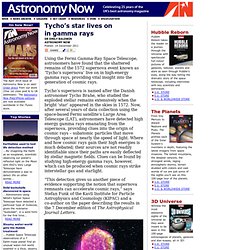

Electro Magnetic Spectrum. Electromagnetic Spectrum - Introduction. The electromagnetic (EM) spectrum is the range of all types of EM radiation.

Radiation is energy that travels and spreads out as it goes – the visible light that comes from a lamp in your house and the radio waves that come from a radio station are two types of electromagnetic radiation. The other types of EM radiation that make up the electromagnetic spectrum are microwaves, infrared light, ultraviolet light, X-rays and gamma-rays. You know more about the electromagnetic spectrum than you may think. The image below shows where you might encounter each portion of the EM spectrum in your day-to-day life. The electromagnetic spectrum from lowest energy/longest wavelength (at the top) to highest energy/shortest wavelength (at the bottom).
Radio: Your radio captures radio waves emitted by radio stations, bringing your favorite tunes. Microwave: Microwave radiation will cook your popcorn in just a few minutes, but is also used by astronomers to learn about the structure of nearby galaxies. Gamma-ray telescope (astronomy.
The History of Gamma-ray Astronomy - Introduction. Long before experiments could detect gamma-rays emitted by cosmic sources, scientists had known that the Universe should be producing such high energy photons.

Hard work by several brilliant scientists had shown us that a number of different processes which were occurring in the Universe would result in gamma-ray emission. These processes included cosmic ray interactions with interstellar gas, supernova explosions, and interactions of energetic electrons with magnetic fields. In the 1960s, we finally developed the ability to actually detect these emissions and we have been looking at them ever since!
Additional gamma-ray experiments flew on the OGO, OSO, Vela, and Russian Cosmos series of satellites. However, the first satellite designed as a "dedicated" gamma-ray mission was the second Small Astronomy Satellite (SAS-2) in 1972. The man seen in this image is Dr. Crab pulsar dazzling gamma-ray beams. A thousand years ago, a brilliant beacon of light blazed in the sky, shining brightly enough to be seen even in daytime for almost a month.

Native American and Chinese observers recorded the eye-catching event. We now know that they witnessed an exploding star, which left behind a gaseous remnant known as the Crab Nebula. The same object that dazzled skygazers in 1054 C.E. continues to dazzle astronomers today by pumping out radiation at higher energies than anyone expected. Researchers have detected pulses of gamma rays with energies exceeding 100 billion electron-volts (100 GeV) -- a million times more energetic than medical X-rays and 100 billion times more than visible light. "If you asked theorists a year ago whether we would see gamma-ray pulses this energetic, almost all of them would have said, 'No.' Tycho's star shines in gamma rays.
Tycho’s star lives on in gamma rays. Tycho’s star lives on in gamma rays DR EMILY BALDWINASTRONOMY NOWPosted: 14 December 2011 Using the Fermi Gamma-Ray Space Telescope, astronomers have found that the shattered remains of the 1572 supernova event known as ‘Tycho’s supernova’ live on in high-energy gamma rays, providing vital insight into the generation of cosmic rays.

Tycho’s supernova is named after the Danish astronomer Tycho Brahe, who studied the exploded stellar remains extensively when the bright ‘star’ appeared in the skies in 1572. Now, after several years of data collection using the space-based Fermi satellite’s Large Area Telescope (LAT), astronomers have detected high energy gamma rays emanating from the supernova, providing clues into the origin of cosmic rays – subatomic particles that move through space at nearly the speed of light.
Where and how cosmic rays gain their high energies is much debated; their sources are not readily identifiable since their paths are easily deflected by stellar magnetic fields. S Fermi Shows That Tycho's Star Shines in Gamma Rays. NASA's Fermi Shows That Tycho's Star Shines in Gamma Rays › Larger image Gamma-rays detected by Fermi's LAT show that the remnant of Tycho's supernova shines in the highest-energy form of light.

This portrait of the shattered star includes gamma rays (magenta), X-rays (yellow, green, and blue), infrared (red) and optical data. (Credit: Gamma ray, NASA/DOE/Fermi LAT Collaboration; X-ray, NASA/CXC/SAO; Infrared, NASA/JPL-Caltech; Optical, MPIA, Calar Alto, O. Krause et al. and DSS)